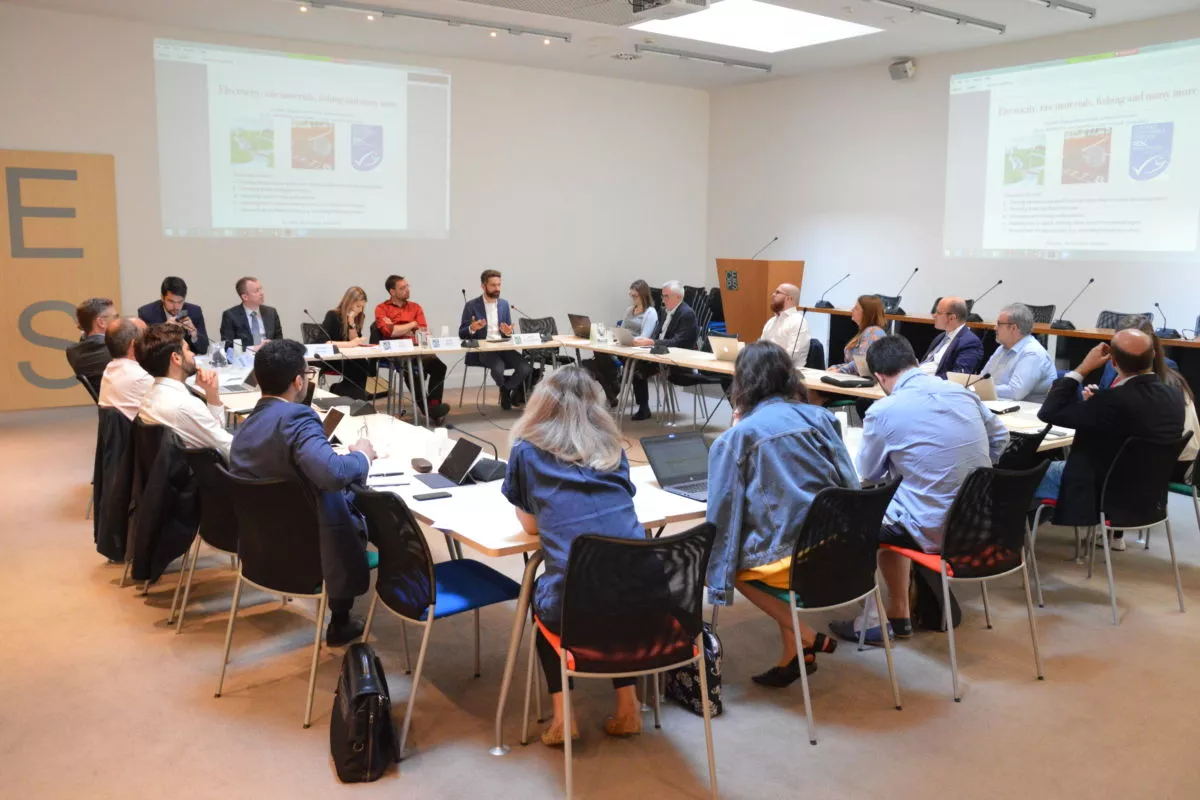The Copenhagen Accord has brought a limited success in paving the way towards the creation of a wider and more inclusive framework succeeding the Kyoto Protocol. The challenge is how to translate the political guidance into practical decisions that can be integrated in the overall negotiating package. The most important outcome is the lack of a legal agreement on quantitative mid-term GHG emission reduction commitments by developed countries.
Meanwhile EU’s negotiating partner countries maintain options for development of domestic emissions trading schemes that could impact the possibility for linking with the EU emissions trading scheme (ETS). Direct linking between cap-and-trade schemes, initially envisaged in the ETS Directive, will likely remain the long-term goal of aspiration. In a mid-term, more promising policy options include indirect linking between cap-and-trade schemes and existing or new flexible mechanisms.
The EU is currently examining the possibility for adjusting the 2020 GHG emission target, which would alter the assumption of the effort-sharing decision and the amended ETS Directive including use of Certified Emission Reductions (CERs)/Emission Reduction Units (ERUs) in the third phase. The EU-ETS will be in particular expected to play the following roles: to act as a nexus for expanding the carbon markets; to remain as the main instrument to achieve the EU’s 2020 targets; and to drive the EU’s long-term strategy for a shift to a low-carbon economy. Key design issues for completion and coordination of the ETS with implication for other ETSs include monitoring, reporting and verification (MRV), auctioning, price floors or caps, offset treatment and border measures.
The forthcoming years will be marked by regulatory uncertainty, opportunities for testing innovative concepts and measures, and difficulties with maintaining the integrity of existing and new measures. The key to success would be the right timing of new measures, and smooth transitions between different measures or instruments.
Against this background CEPS proposes to launch a new CEPS Task Force on ‘The carbon market after Copenhagen’ in order to:
• Consider implications of ongoing policy development for the EU: UN negotiations and other international discussions;
• Address key challenges of the future carbon market: demand and supply balance, the EU 2020 target, surplus Assigned Amount Units (AAUs), international offsetting and new mechanisms, new sectors, new commodities;
• Examine how effectively indirect linking through new commodities could develop into a global carbon market; and
• Explore possibility for completing and coordinating the designs of ETSs, e.g. MRV, auctioning, a price floor/cap, treatment of offsets, border measures.
The Task Force will start in July 2010 and run until February 2011 with a view to presenting an interim report at a side-event in the Conference of Parties (COP16) and a final report in Brussels in 2011.
The Task Force will first set the overall context and goals mainly from the international side (1st meeting), then look at new international mechanisms and domestic schemes under consideration (2nd meeting), and narrow down the focus on design elements of the EU ETS (3rd meeting).
At the third meeting CEPS will also provide a draft outline of the interim report for presentation at a side-event in the COP16. At the fourth and last meeting the Task Force will discuss a draft of the final report.
A CEPS Task Force will constitute a unique forum of representatives from business and industry, various Directorate Generals from the European Commission (e.g. DG Climate Action, DG Enterprise, DG Mobility & Transport or DG ECFIN), member states, Members and staff of the European Parliament, NGOs and other stakeholders to discuss highly topical issues in a multi-stakeholder setting.
For more information please consult the Prospectus below.
Chair:
Benoît Leguet, Chair of the JI Supervisory Committee, Vice President for Research, CDC Climat
Rapporteurs:
Noriko Fujiwara, Research Fellow and Head of Climate Change, CEPS
Anton Georgiev, Research Fellow, CEPS
Christian Egenhofer, Senior Fellow, CEPS
Meetings:
1st meeting: 2 July 2010 (agenda)
2nd meeting: 15 September 2010 (agenda)
3rd meeting: 27 October 2010 (agenda)
Key messages at a COP16 side-event on 2 December 2010 (agenda)
4th and last meeting: 27 June 2011. Task Force report.
Introduction
Key messages and recommendations
Prospectus (incl. Registration form)
CEPS side event – COP16 – Cancún, Mexico: agenda
Presentations:
The future of the carbon markets: Challenges and the way forward for the European Union – Benoît Leguet, Chair, UNFCCC Joint Implementation Supervisory Committee
Head of Research, CDC Climat
Comments on keymessages #2,6,7,and 8 – Ulla Blatt Bendtsen & Assar Qureshi, Danish Energy Agency
Role of carbon market to enable scaled up emission reductions and finance – Liva Andersone, DG Climate Action, European Commission
Presentations 1st meeting:
Introduction to the Task Force – Noriko Fujiwara, CEPS
Reforming the existing carbon market – Ulrika Raab, Swedish Energy Agency, Chair of the completed CEPS Task Force on the CDM and post-2012 flexible mechanisms
Enel in the CDM market – Giuseppe Deodati, Enel
Presentations 2nd meeting:
Key messages from the 1st meeting – Noriko Fujiwara, CEPS
Towards a global carbon market – Richard Armand, Entreprises pour l’Environnement (EPE)
Sectoral, NAMA-based: defining new instruments for the future carbon market – Richard Baron, Climate Change Unit, International Energy Agency (IEA)
How to Make New Tools Work in the Carbon Market – Henry Derwent, International Emmisions Trading Association (IETA)
Joint Implementation and European Offsetting – Morten Prehn, Joint Implementation Action Group (JIAG)
The Role of the Private Sector in Generating Carbon Credits from REDD+ Moritz von Unger, Climate Focus
Presentations 3rd meeting:
Key messages from the second meeting by Noriko Fujiwara, CEPS
Comment by Frederike Lehmann, Shell







